Review: OnePlus 3T
Dec 8, 2016, 2:30 PM by Eric M. Zeman

This unlocked Android smartphone from OnePlus is an excellent handset for the contract-averse. OnePlus took its excellent flagship phone from earlier this year and improved it with a round of fresh components under the hood. The result makes the OnePlus 3T one of the best phones available right now. Here is Phonescoop's full report.
Hardware
Is It Your Type?
The OnePlus 3T is a slightly refreshed version of the already-excellent OnePlus 3. There's some new circuitry under the hood, which itself has a fresh coat of paint. This "affordable flagship" has a premium build and specs, and costs significantly less than class leaders from Samsung, LG, HTC, and others. The seemingly minor updates make the OnePlus 3T a sure bet for those who seek affordable, unlocked phones.
Body
Editor's Note: Because the OnePlus 3T is so similar to the OnePlus 3, significant portions of the following text have been reprinted from our earlier review. Rest assured, we fully evaluated the OnePlus 3T and this review reflects the real-world performance of the newer model.
The 3T has a simple, direct, metal-and-glass appearance. It was milled from a single block of aluminum and has antenna lines that run side-to-side across the back. The metal chassis forms the rear and side surfaces of the phone, with 2.5D glass on front. The only exterior change made by OnePlus is the color. The 3T drops the graphite color for a darker gunmetal gray. I like it. The 3T also comes in gold. It's a good design, but far from an original one thanks to similarities to phones from Apple and HTC.
The 3T is svelte. It's about the same dimensions as the Alcatel Idol 4S and ZTE Axon 7, against which it competes directly. The phone is tall and wide, but is also incredibly slim and relatively light. With a 5.5-inch screen, it is definitely in phablet territory and often requires two hands to use. I had a hard time reaching the upper portions of the display with my thumb, even if I changed my grasp and stretched my hand. OnePlus curved the back panel near the side edges, which helps push the phone a bit deeper into your palm. The phone's thin profile helps when it comes time to put the phone in your pocket. I had no trouble slipping it into jeans, slacks, or shorts.
You can't ask for better materials or build quality. The metal chassis feels strong and solid, despite how little the phone weighs. The glass is curved right where it meets the chamfered aluminum side edges. The phone's design flows all the way around, making it clear OnePlus took pains to assemble the phone carefully.
Like most modern phones, the display consumes the lion's share of the 3T's front surface. Slim bezels run along the side edges, with thicker bands of black glass above and below the screen. A fingerprint sensor is the only button/control below the display. It can double as a home key. The reader is indented slightly, which makes it easier to find with your thumb. The 3T uses on-screen buttons to control the user interface.

The 3T has one of the most useful buttons I've seen on a phone in some time. On the left edge, near the top, you'll find a three-position switch. This switch sets the ringer profiles: totally silent, vibrate, all sounds/alerts. This is a great way to quickly change the setting of your phone without requiring you to unlock it or even pull it out of your pocket. The switch has a ribbed texture and generous profile, and the three positions are easy to detect as you move the switch back and forth. OnePlus stuck the volume toggle below this switch. The metal toggle is thin, but has a good profile and decent travel and feedback.
OnePlus did a good job with the lock button on the right edge. It has an excellent profile and just about perfect travel and feedback. The SIM tray is above the screen lock button. The phone supports one or two SIM cards for separate accounts, but doesn't support memory cards. The 3.5mm headphone jack, USB Type-C port, and speaker are all tucked into the bottom edge. Note that USB-C is gaining in popularity, but still less common than micro-USB.
The rear panel is mostly flat, but tapers slightly where the panel approaches the side edges. There are two black antenna lines, one near the top and a second near the bottom. The camera module is perched close to the top edge. It protrudes quite a bit from the rear surface, and has a nice chrome rim to help it stand out. The LED flash is just below the camera.

The unibody metal chassis means the battery is sealed up inside nice and tight. The phone doesn't support wireless charging, but it does include rapid wired charging.
In sum, the OnePlus 3T is an excellent handset on par with devices from brand-name competitors that cost much more.

Screen
The display is one spec where the OnePlus 3T trails the Alcatel Idol 4S and ZTE Axon 7. It measures 5.5 inches across the diagonal and sticks with 1080p full HD, rather than quad HD. If you're not interested in using your phone for VR, the OnePlus 3T still manages to hold its own. The 3T has plenty of pixels for browsing the web, watching videos, and viewing Instagram imagery. I found everything was sharp enough. The phone uses what OnePlus calls Optic AMOLED screen technology, which is in turn protected by a slab of Gorilla Glass 4. The display is plenty bright, offers rich colors and contrast, and puts out enough light for easy outdoor use. Viewing angles are quite good; there's a bit of brightness drop, but no blue shift. The OnePlus 3T may not have as many pixels as its competitors, but the experience isn't lacking.
Signal
OnePlus sells the 3T unlocked. It includes support for LTE Bands 1, 2, 4, 5, 7, 8, 12, 17, and 30, which means it is fully compatible with AT&T and T-Mobile's 4G networks, as well as Cricket and MetroPCS. Support for band 30 is unusual among unlocked phones, and should help with 4G LTE data speeds and coverage on AT&T.
I tested the 3T on both AT&T and T-Mobile and saw a slight improvement when compared to the 3. The phone connected to both 4G networks without trouble and didn't drop to 3G like I saw the 3 do several times. In other words, the 3T works better than the OnePlus 3 did by a small margin The device was always able to make calls and hold onto them at highway speeds. I didn't suffer any dropped or missed calls while testing the device. Data speeds were solid. The phone was able to handle streaming from YouTube and Spotify via LTE with no problem, and was always quick to load content from Facebook and Instagram.
Sound
The OnePlus 3T suffices as a voice phone. Call quality is acceptable through the earpiece with little-to-no distortion, but the phone doesn't pump out enough volume. I was able to hear calls in my quiet home, a stationary car, and an empty mall with no issue, but it's harder to hold a conversation in a noisy coffee shop, moving car, or any other space with lots of background noise. Clarity is a bit better than it was with the OnePlus 3, and that's good.. People I spoke to through the 3T said I sounded pretty good.
The speakerphone delivers clarity that's on par with the earpiece. The speakerphone delivers just enough punch to be useful. You'll get the best experience in a quiet space, but the 3T manages to do okay inside a moving car.
The Alcatel Idol 4S and ZTE Axon 7 have powerful stereo speakers that are far louder and offer a fuller range of sound, too.
Ringers and alerts on the 3T are loud enough, and the vibrate alert delivers a powerful jolt.
Battery
One of the bigger improvements found in the 3T is the battery. OnePlus boosted the capacity from 3,000 mAh in the 3 smartphone to 3,400 mAh in the 3T. The difference is palpable. In side-by-side tests, the 3T outlasts the 3 by a significant margin. If you need all-day power, the OnePlus 3T has you covered. I found the battery consistently pushed through a full day without breaking a sweat and often coasted through most of a second day. I ran a wide variety of apps with all the radios on and screen brightness set to about 60%. We can thank the 1080p resolution a bit here, (as more pixels would take more power to illuminate.) Moreover, the updated processor is a bit more power efficient, too. The larger battery and processor combo give the OnePlus 3T a definite advantage.
The device includes the basic battery saver tool from Google. You can turn this on whenever you want, or have it come on automatically when the battery reaches 15% or 5%. It reduces screen brightness, cycles back the processor, reduces notifications, and so on.
The 3T includes what OnePlus calls Dash Power. It is a variant of Qualcomm's QuickCharge technology. OnePlus claims a 30-minute charge will replenish over 60% of the 3T's battery, allowing for more than 7 hours of HD video playback. It recharges very quickly. The phone doesn't support wireless charging.
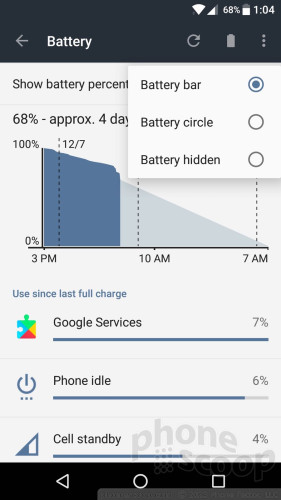
Bluetooth, GPC, NFC, WiFi
All of the 3T's secondary radios did well enough. The Bluetooth 4.2 LE radio paired with headphones and speakers easily enough, and, unlike its predecessor, had no trouble connecting with my car. Calls pushed to mono headsets were pretty good. Music sounded good enough to my ears when I tested the 3T through several different sets of Bluetooth speakers. The phone was able to pair with other phones and PCs for file transfers when necessary.
NFC is aboard and I found it helpful when pairing with some accessories. The NFC radio can also be put to use with Android Pay for mobile (tap) payments if you wish.
The GPS radio worked flawlessly. The phone was able to locate me in a blink and accuracy was about 20 feet. The OnePlus 3T has more than enough accuracy and juice to power Google Maps.
The WiFi radio (802.11a/b/g/n/ac) didn't give me any cause for concern.
Software
Lock Screen
The 3T includes a wide selection of options for managing the lock screen and notifications.
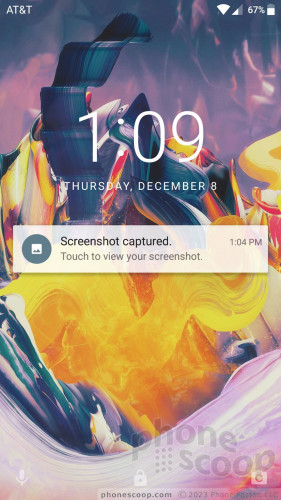
First, you can set the Ambient Display to on or off. OnePlus' Ambient Display, like many others, wakes the screen with simple notifications when messages or emails arrive. The screen is on for perhaps three seconds before it blinks off again. Missed the notification? Wave your hand over the screen to see the simple notification again, or double-tap the screen to fully wake the lock screen.
The full lock screen includes the time, date, and list of notifications. You can get rid of notifications one at a time or en masse. Double-tapping a notification opens the associated app, such as email or Facebook Messenger. As always, you can define which apps are allowed to push notifications to the lock screen, as well as how much information is shared on the lock screen. The notification screen also includes shortcuts to the phone and camera apps. You cannot customize these shortcuts.
As far as security goes, the 3T includes PIN, pattern, password, and fingerprint. The fingerprint reader works flawlessly. I was able to set up several fingers and the phone recognized them each quickly and accurately. The fingerprint reader is top notch.
Remember the profile switcher I mentioned? It's called the Alert Slider, and is meant to help control notifications that would vibrate, make noise, or both. As noted, it's easy to set the phone to fully silent (even alarms) or full volume for everything. There are menu settings that allow users to specify just which apps fall into which profiles and what sort of sound/vibrate patterns they are allowed to use. This is incredibly useful.
Last, you can customize the LED indicator light to blink specific colors for specific types of messages.
Menus
All of OnePlus' handsets run “OxygenOS”, which is really just a skin for Android. The OnePlus 3T runs Android 6 at its core and the latest version of OxygenOS from OnePlus. This mostly means the 3T has some aesthetic changes that give the UI a smoother look when compared to what's on the OnePlus 3. OnePlus is working to update both the 3 and the 3T to Android 7 Nougat in the next month or so. Once the devices are on Nougat, the UI experience will be identical.
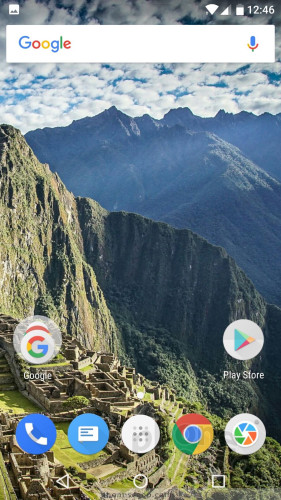
Anyone familiar with Android will know exactly how to use the OnePlus 3T. In fact, the device offers a near-to-stock Android experience. OxygenOS does, however, add a wide range of extra tools for tweaking how the OnePlus 3T operates.
Out of the box, the phone has two home screen panels up and running with a third, called the Shelf, off to the left. The home screen panels function as they would on any other Marshmallow handset. That means they accommodate wallpapers, shortcuts, widgets, and so on. The Shelf is its own story.
The Shelf is a customizable space where you'll find what matters most or what you use most. By default, it shows the local weather, a shortcut for writing a note, and several app suggestions that change over time. You can also add in your favorite contacts and a couple of app widgets. It's more like the suggested apps/search tool in iOS 10 than Google Now. Honestly, I have no use for it and thankfully you can turn it off completely if you want.
OxygenOS relies on Android's standard full app menu, Quick Settings shade, and settings menu. This is good news, since they function as you'd expect, which is very well.
Then there are the extras. First, dark mode. You can set the OnePlus 3T to switch to Dark Mode, which is meant for use at night. Dark Mode changes what are normally white screens to black, and black text to white. It primarily impacts menus and other system screens; it does not change apps. I like that you can adjust the accent colors. Second, you may customize the status bar. OxygenOS allows you to choose which app icons are displayed in the status bar and which are not. Third, you can adjust the software buttons so they run back-home-switch, or switch-home-back (if you're used to the Samsung arrangement.) Even better, you can assign actions for long-presses of these buttons (voice search, open last app, recent apps, etc.) Fourth, the fingerprint reader doubles as a home button if you want, or not. When it is active as a home button, you can customize long press and double-tap actions. Fifth, there are plenty of gestures, such as drawing an "O" on the lockscreen to open the camera, or drawing a "V" to turn on the flashlight. You can also launch playlists and even go forward and backward tracks.
These extras are not only neat, but also useful. They help make the OnePlus 3T a more personal device that responds to more intimate input.
The processor is among the 3T's improved specs. It jumps from the Snapdragon 820 to the Snapdragon 821. The 3T carries over the 6 GB of RAM found in the 3. This is currently among the best processor/memory combos available in the market. The OnePlus 3T absolutely flies. It's incredibly quick. There is no lag anywhere in the user interface. This handset does everything in the blink of an eye.
Camera
There are multiple ways to launch the camera; it's up to you to pick which works the best. For example, you can set the camera to launch when you double-press the screen lock button or double-tap the fingerprint sensor. You can open the camera from the lock screen, or with a long-press of the back, home, or recent apps buttons. I favor a double-press of the screen lock button. Whichever way you choose, the camera opens in about 1 second.
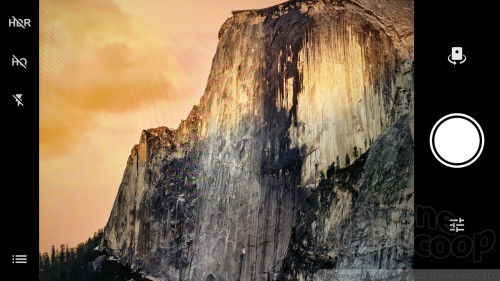
The camera app is rather simple and I appreciate that. You'll see controls sprinkled down the left and ride sides of the viewfinder: on the left are toggles for HDR, HQ (ehivh is RAW), and the flash, while on the right are buttons for the selfie cam, shutter button, and timer/grid controls. I like that the HDR and flash functions both include an “auto” option; even better, the camera warns you ahead of time when it will use HDR or fire the flash, as you point and shoot.
Swipe the screen up or down to switch between still and video modes. Other modes are accessed by swiping the screen to the right. Those modes include: time-lapse, slow motion, auto, video, manual, and panorama. Swipe the screen to the left to see your most recent shot.
The shooting modes behave as you'd expect them to are are fairly simple to use. When in manual mode, you can set exposure (up to 30 seconds), focus, white balance, and ISO. Easy-to-decipher dials help you select what's best, and the screen previews the type of exposure you may get with those settings.
The Snapdragon 821 helps resolve some of the lag I saw in the camera app on the OnePlus 3. The 3T's camera performs all tasks perfectly and is speedy.
Photos/Video
The OnePlus 3T carries over the same 16-megapixel sensor with both optical and electronic image stabilization, and phase detection autofocus from the 3. The camera boasts an aperture of f/2.0, and those 16 million pixels are each 1.12 microns in size. OnePlus also boasts about its Dynamic De-Noise technology to get rid of grain.
The sensor and software may be the same, but the processor is not. The Snapdragon 821 has a fresh Image Signal Processor on board that speeds up and improves how the software handles the information captured by the sensor. It makes a difference.
Where the OnePlus 3 took adequate pictures, the OnePlus 3T takes good ones. Core aspects — including focus, exposure, and white balance — were on point most of the time. The phone did a commendable job in brightly lit environments and dim environments without grain or other noise that might have ruined the shots. The 3T still doesn't match the iPhone 7 Plus or Pixel XL, but it's not that far behind. The 3T certainly bests the competition in its price class, such as the Alcatel Idol 4S and ZTE Axon 7.
OnePlus decided the 8-megapixel selfie camera of the 3 wasn't enough and gave the 3T a 16-megapixel front camera with an aperture of f/2.0. It, too, benefits from the Snapdragon 821's ISP tech to produce significantly better selfies than what I saw from the OnePlus 3. The 3T also gains a self-beautification tool for eliminating skin blemishes in your self portraits. There is still no user-facing flash. People who like photographing themselves will be very happy with the 3T.
The phone shoots video at resolutions up to 4K. I think most people will be more than satisfied with the 1080p full HD resolution video they capture. The phone handles focus, exposure, and color very well, with minimal grain.
The OnePlus 3T is a fine camera for this class of phone. It can serve as most people's main, everday imaging and video device.
Wrap-Up
OnePlus managed make an already-compelling handset even better. The OnePlus 3T covers all the necessary bases to be deemed a flagship, and yet it costs hundreds of dollars less than today's leading phones.
The unibody chassis is well-designed and attractive, even if a bit familiar. The phone is glued together tightly, giving it an air of strength. It's big, but the 3T is still easy to carry around and use thanks to the slim and light frame. The screen isn't the absolute best for this class of device, but it's certainly good enough. The 3T delivers better call quality and better signal performance than the 3, and the larger, faster-charging battery packs plenty of power for power users. The 3T ships with a generous 64 GB of storage, but some may complain about the lack of memory card support. The fingerprint sensor is as quick and accurate as any I've tested.
Don't be put off by OnePlus' so-called OxygenOS. The phone practically runs stock Android and, in fact, is more customizable than many of its competitors thanks to a litany of options like Active Display, Shelf, and Dark Mode. The camera app is solid, if simple, and the phone's imaging sensors deliver fine photographs and videos thanks to improved ISP from Qualcomm.
As far as value is concerned, it's hard to beat the OnePlus 3T. The phone is available online, unlocked for $439. That's just $40 more the Alcatel Idol 4S, ZTE Axon 7, and Huawei Honor 8, and $200-$400 less than iPhone or Galaxy S.
The OnePlus 3T is an excellent option that should excite those seeking freedom from carriers. The 3T is not perfect, but is among the best phones I've tested this year — and that says something when you consider the phones against which it is competing.
Comments
No messages






















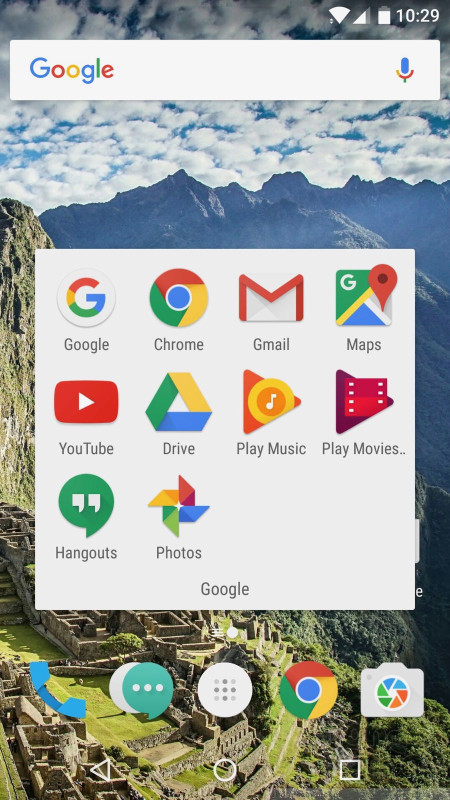





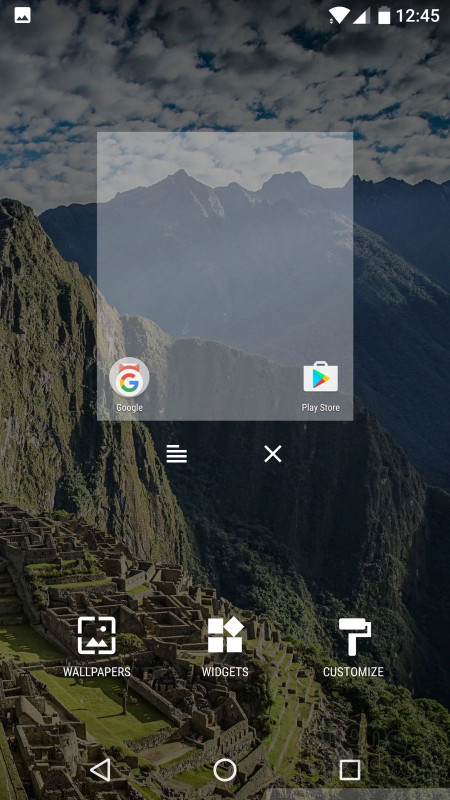








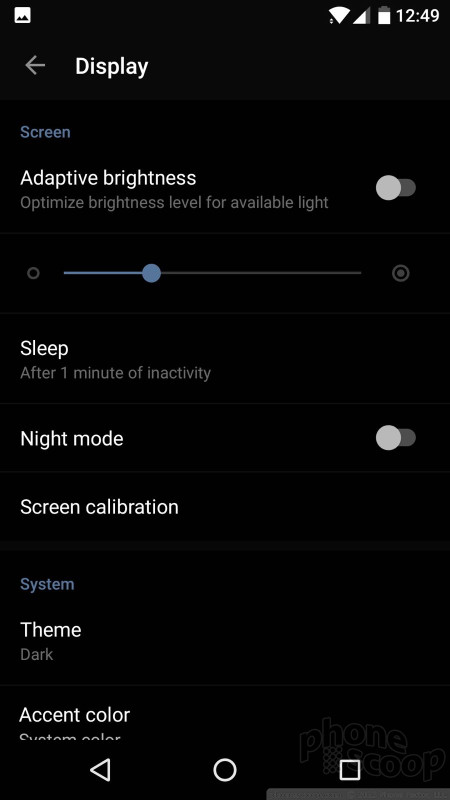





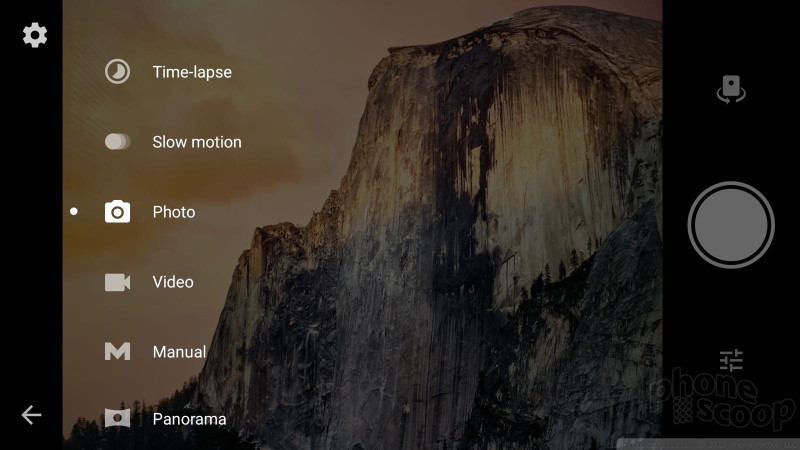





















 5 Best Unlocked Smartphones
5 Best Unlocked Smartphones
 OnePlus Commits to Updating the 3/3T to Android P
OnePlus Commits to Updating the 3/3T to Android P
 Android 8 Oreo Headed to OnePlus 3 and 3T
Android 8 Oreo Headed to OnePlus 3 and 3T
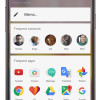 OnePlus Rolls Out New OxygenOS Betas for 3 and 3T
OnePlus Rolls Out New OxygenOS Betas for 3 and 3T
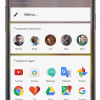 OnePlus Says OnePlus 3 and 3T to Get Android O
OnePlus Says OnePlus 3 and 3T to Get Android O
 OnePlus 3T
OnePlus 3T



